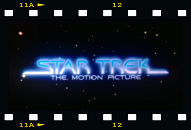 Stardate 7412.6: Two and a half years after the end of the mission of Kirk (who has now become an admiral) and his crew, the Enterprise has been refitted inside and out, almost an entirely new ship, and some of the crew have drifted apart – McCoy has taken an extended leave, Kirk has accepted a desk job, and Spock has returned to Vulcan to pursue the Kolinahr discipline, a total purge of emotions. In the meantime, Sulu and Uhura have stayed with the Enterprise during its testing phase, while Chekov has become ship’s chief of security and Nurse Chapel has become a full doctor. Captain Willard Decker, son of the late Matt Decker, is slated to become the ship’s new commanding officer. An “energy cloud” of unknown origin and intent has carved a path of destruction through the galaxy on a direct course for Earth, having destroyed a flotilla of Klingon ships as well as Federation communications relay station Epsilon 9.
Stardate 7412.6: Two and a half years after the end of the mission of Kirk (who has now become an admiral) and his crew, the Enterprise has been refitted inside and out, almost an entirely new ship, and some of the crew have drifted apart – McCoy has taken an extended leave, Kirk has accepted a desk job, and Spock has returned to Vulcan to pursue the Kolinahr discipline, a total purge of emotions. In the meantime, Sulu and Uhura have stayed with the Enterprise during its testing phase, while Chekov has become ship’s chief of security and Nurse Chapel has become a full doctor. Captain Willard Decker, son of the late Matt Decker, is slated to become the ship’s new commanding officer. An “energy cloud” of unknown origin and intent has carved a path of destruction through the galaxy on a direct course for Earth, having destroyed a flotilla of Klingon ships as well as Federation communications relay station Epsilon 9.
Admiral Kirk convinces Starfleet to give him command of the Enterprise, displacing Decker to the position of first officer. The refitted ship still has problems, most notably a transporter malfunction which kills two incoming crew members, including the ship’s new Vulcan science officer, whose duties Kirk again hands to Decker. Once the transporter is repaired, the final crew members board the Enterprise, such as Lt. Ilia, the ship’s new navigator who once had a relationship with Decker on her home planet of Delta IV; and Dr. McCoy reluctantly resumes his position after being called back into service by Starfleet. Kirk’s unfamiliarity with the Enterprise’s new design is proven when he orders the ship to warp speed against the recommendations of Decker and Scotty, plunging the ship into a wormhole which it escapes with a last minute order from Decker. While repairing the damage, the ship is boarded by a ship from Vulcan carrying Spock, who offers to resume his post as science officer. Spock begins by helping Scotty overcome the difficulties with the warp engines, enabling the Enterprise to head for the cloud at top speed.
En route, Spock reveals that he was unable to complete his Kolinahr training because he detected an intelligence which he believes is part of the cloud. Penetrating the cloud, the Enterprise wards off an attack but is weakened in the process. After Spock manages to devise a makeshift message to speak to the cloud-entity in its own language and frequency, the ship delves further into the cloud and is boarded by a beam of energy which tries to access the ship’s records on Starfleet and Earth defenses. Spock damages the computer so the beam cannot gather any more information, but is attacked by the beam, which then seems to envelop Lt. Ilia and disappears from the ship, leaving no trace of Ilia. The Enterprise is trapped inside an enclosed, solid space within the cloud, and Ilia turns up again soon afterward, but this time as a puppet of the cloud-entity, identified by the now-dehumanized Ilia as V’ger. Curious to find more about V’ger, Spock steals a spacesuit and a thruster pack and launches himself into a small opening through which the Enterprise cannot travel, and finds himself floating through the memories of V’ger’s entire journey through the universe, eventually coming to an image of Ilia as she was before V’ger’s invasion of the bridge. Spock tries to mind-meld with V’ger through the image, but the staggering amounts of V’ger’s memory and thought overloads Spock’s mind, and he is ejected back to the Enterprise, where he is recovered and given medical attention.
The Ilia-probe tells Kirk that V’ger is on its way to Earth to find its own creator, although V’ger refuses to believe that its creator could be a member of the human race, which it intends to wipe out, if necessary, to complete its search. The cloud has reached Earth and is ready to commence with its task. When Kirk promises the Ilia-probe that he has the information V’ger seeks, V’ger releases the Enterprise and draws it to the center of the cloud, where V’ger itself rests. Kirk, Spock, McCoy and Decker, led by Ilia, find that V’ger is, in fact, a NASA Voyager space probe that was encountered by a race of intelligent machines and, taking the probe’s instructions – to learn all it can and report its findings back its creator – literally, the machines created the cloud-vessel as a means for Voyager to return to Earth and deliver its wealth of information. But the probe is unwilling to transmit its information on command, demanding to become one with its creator. Decker manually forces Voyager to transmit its information, but is absorbed by a wave of energy when V’ger believes its creator – the only being who could operate it – has arrived. Kirk, Spock and McCoy rush back to the Enterprise just in time. The cloud dissipates, leaving the Enterprise in orbit over Earth. Kirk and Spock speculate that Decker’s emotions concerning his relationship with Ilia, the loss of his command of the Enterprise, and other feelings will transform V’ger into a new life form that the Federation may meet again in the future.

 screenplay by Harold Livingston
screenplay by Harold Livingston
story by Alan Dean Foster
directed by Robert Wise
music by Jerry Goldsmith
Cast: William Shatner (Admiral Kirk), Leonard Nimoy (Mr. Spock), DeForest Kelley (Dr. McCoy), James Doohan (Mr. Scott), George Takei (Sulu), Majel Barrett (Dr. Chapel), Walter Koenig (Chekov), Nichelle Nichols (Uhura), Persis Khambatta (Lt. Ilia), Stephen Collins (Commander Decker), Grace Lee Whitney (Chief Petty Officer Rand), Mark Lenard (Klingon Captain), Billy Van Zandt (Alien Boy), Roger Aaron Brown (Epsilon Technician), Gary Faga (Airlock Technician), David Gautreaux (Commander Branch), John D. Gowans (Assistant to Rand), Howard Itznowitz (Cargo Deck Ensign), Jon Rashad Kamal (Lt. Commander Sonak), Marcy Lafferty (Chief DiFalco), Michele Ameen Billy (Lieutenant), Terrence O’Connor (Chief Ross), Michael Rougas (Lt. Cleary), Susan J. Sullivan (Woman), Ralph Brannen, Ralph Byers, Paula Crist, Rik Lane, Franklyn Seales, Momo Yashima (Crew Members), Jimmie Booth, Joel Kramer, Bill McTosh, Dave Moordigan, Tom Morga, Tony Rocco, Joel Schultz, Craig Thomas (Klingon Crewmen), Edna Glover, Norman Stuart, Paul Weber (Vulcan Masters), Joshua Gallegos (Security Officer), Leslie C. Howard (Yeoman), Sayra Hummel, Junero Jennings (Technical Assistants)
Notes: As is generally well known now, Star Trek: The Motion Picture was the final remnant of a 1978 attempt by Paramount Pictures to launch its own fourth television network, with a revived Star Trek as its biggest attraction (not unlike the launch, almost 20 years later, of UPN with Star Trek: Voyager). Persis Khambatta, Stephen Collins and David Gautreaux were originally signed to series regular contracts, with Gautreaux slated to play the role of Lt. Xon, a full-blood Vulcan science officer. (Leonard Nimoy wasn’t aboard the project until after the release of Star Wars had permanently transformed the new series into a major feature film, and even then he had to be talked into the project by director Robert Wise and several Paramount bigwigs.) Over a dozen scripts were written, including a two-part cliffhanger taking Kirk behind Klingon lines, before the series was abandoned; two of those scripts, Devil’s Due and The Child, would later be resurrected as Star Trek: The Next Generation episodes, while a third, World Enough And Time, would be dusted off as an episode of the fan-made video project continuing the Kirk era, Star Trek: New Voyages. Before his death, director Robert Wise revised Star Trek: The Motion Picture, adding and deleting scenes, editing the movie tighter, and replacing some effects scenes with CGI; this is currently the only version of the film available on DVD.
LogBook entry by Earl Green
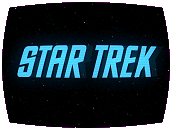 Stardate not given: Kirk leads a landing party to do a geological survey of an unexplored planet, but before they beam down, they see a woman appear out of nowhere in the transporter room and kill a crewman simply by touch, and then she disappears. Her appearance also affects the Enterprise, sending it well out of communications range, trapping Kirk and his team on the planet’s surface. The woman continues to appear, naming her victim on arrival and killing them by touch. Sulu is nearly killed by her, and the woman appears on the Enterprise as well, sabotaging the engines so the ship will never retrieve Kirk’s survey team, stranding them – as well as the crew of the Enterprise – with an unpredictable murderer.
Stardate not given: Kirk leads a landing party to do a geological survey of an unexplored planet, but before they beam down, they see a woman appear out of nowhere in the transporter room and kill a crewman simply by touch, and then she disappears. Her appearance also affects the Enterprise, sending it well out of communications range, trapping Kirk and his team on the planet’s surface. The woman continues to appear, naming her victim on arrival and killing them by touch. Sulu is nearly killed by her, and the woman appears on the Enterprise as well, sabotaging the engines so the ship will never retrieve Kirk’s survey team, stranding them – as well as the crew of the Enterprise – with an unpredictable murderer.teleplay by John Meredyth Lucas
Guest Cast: James Doohan (Mr. Scott), George Takei (Lt. Sulu), Nichelle Nichols (Lt. Uhura), Walter Koenig (Chekov), Lee Meriwether (Losira), Arthur Batanides (D’Amato), Naomi Pollack (Rahda), Booker Bradshaw (Dr. M’Benga), Brad Forrest (Ensign), Kenneth Washington (Watkins)


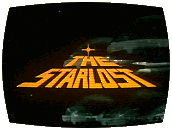
 Ellison himself. Never afraid to rub the right people the wrong way, Ellison had a time-honored tradition of removing his name from scripts that he felt had been tinkered with to the point of unrecognizability by the producers of shows he sold stories to, replacing his credit with the pseudonym “Cordwainer Bird,” a signal to his fans that his work had been altered. He had threatened to use this pseudonym on the famous Star Trek episode
Ellison himself. Never afraid to rub the right people the wrong way, Ellison had a time-honored tradition of removing his name from scripts that he felt had been tinkered with to the point of unrecognizability by the producers of shows he sold stories to, replacing his credit with the pseudonym “Cordwainer Bird,” a signal to his fans that his work had been altered. He had threatened to use this pseudonym on the famous Star Trek episode 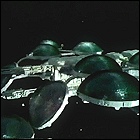 science fiction television show. While taking place aboard a vast spaceship, The Starlost allowed for location filming by equipping that ship with enclosed ecosystem domes, each containing a different kind of terrain and society. Any location could be used, and any issue explored, within The Starlost’s format. Three main characters would escape from a dome whose enclosed society was Amish, discovering the innards of a ship brimming with technology far beyond their comprehension. Making their way to the bridge, they find that the ship is out of control and off course, barreling toward a star in its path. None of the original flight crew, or their descendants, remain alive to pilot the Ark, which contains representative cross-sections of Earth flora and fauna – and diverse human societies, with all of their foibles intact. The hunt is on to visit the other domes in search of someone who can steer the ship away from imminent disaster. This way, even un-redressed modern-day settings could be used: just another snapshot of society, frozen in amber in one of the Ark’s domes – a perfect recipe for affordable, weekly, issue-driven science fiction.
science fiction television show. While taking place aboard a vast spaceship, The Starlost allowed for location filming by equipping that ship with enclosed ecosystem domes, each containing a different kind of terrain and society. Any location could be used, and any issue explored, within The Starlost’s format. Three main characters would escape from a dome whose enclosed society was Amish, discovering the innards of a ship brimming with technology far beyond their comprehension. Making their way to the bridge, they find that the ship is out of control and off course, barreling toward a star in its path. None of the original flight crew, or their descendants, remain alive to pilot the Ark, which contains representative cross-sections of Earth flora and fauna – and diverse human societies, with all of their foibles intact. The hunt is on to visit the other domes in search of someone who can steer the ship away from imminent disaster. This way, even un-redressed modern-day settings could be used: just another snapshot of society, frozen in amber in one of the Ark’s domes – a perfect recipe for affordable, weekly, issue-driven science fiction.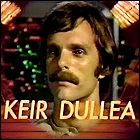 make the show affordable. Canadian writers would be hired to execute Ellison’s vision, with Ellison and his science advisor – respected SF author Ben Bova – steering things from their offices in Hollywood. Famed special effects innovator Douglas Trumbull, who had wowed the movie world with
make the show affordable. Canadian writers would be hired to execute Ellison’s vision, with Ellison and his science advisor – respected SF author Ben Bova – steering things from their offices in Hollywood. Famed special effects innovator Douglas Trumbull, who had wowed the movie world with 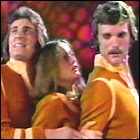 Trumbull’s best efforts, his patented system to superimpose live actors over detailed miniature sets failed to work convincingly in the medium of video. (Infamously, the “pitch reel” for The Starlost highlighted Trumbull’s technique to greater effect than the series itself ever did.) Rewrites were ordered to Harlan Ellison’s pilot script, in some cases quite drastic, and “Cordwainer Bird” swooped in once more; Ellison was disowning his creation before it had even gotten off the ground, and triggered an exit clause in his contract. Ben Bova had no such clause, and was trapped on the series, offering advice to a team of Canadian writers who ignored his scientific wisdom as often as they heeded it. (Bova would later fictionalize this experience in his novel “The Starcrossed,” while Ellison would rage about his singular shot at creating a television series in the introduction he penned for a novelization of The Starlost’s pilot script, “
Trumbull’s best efforts, his patented system to superimpose live actors over detailed miniature sets failed to work convincingly in the medium of video. (Infamously, the “pitch reel” for The Starlost highlighted Trumbull’s technique to greater effect than the series itself ever did.) Rewrites were ordered to Harlan Ellison’s pilot script, in some cases quite drastic, and “Cordwainer Bird” swooped in once more; Ellison was disowning his creation before it had even gotten off the ground, and triggered an exit clause in his contract. Ben Bova had no such clause, and was trapped on the series, offering advice to a team of Canadian writers who ignored his scientific wisdom as often as they heeded it. (Bova would later fictionalize this experience in his novel “The Starcrossed,” while Ellison would rage about his singular shot at creating a television series in the introduction he penned for a novelization of The Starlost’s pilot script, “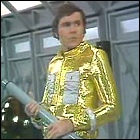 shows of the time, most American-made drama series were made on film, and the use of video was perceived as “cheap,” or a necessary evil used by programs requiring a very quick production turnaround, such as newscasts and soap operas. The special effects of The Starlost had been reduced to technology that the Canadian studio could handle, abandoning Trumbull’s sophisticated two-camera system, frquently resulting in effects shots looking no more convincing than a nightly weather forecast. Despite guest appearances from past and future genre heavyweights such as John Colicos, Barry Morse and Walter Koenig, among other faces familiar to Canadian TV viewers, The Starlost couldn’t be saved; the show was cancelled after only 16 episodes.
shows of the time, most American-made drama series were made on film, and the use of video was perceived as “cheap,” or a necessary evil used by programs requiring a very quick production turnaround, such as newscasts and soap operas. The special effects of The Starlost had been reduced to technology that the Canadian studio could handle, abandoning Trumbull’s sophisticated two-camera system, frquently resulting in effects shots looking no more convincing than a nightly weather forecast. Despite guest appearances from past and future genre heavyweights such as John Colicos, Barry Morse and Walter Koenig, among other faces familiar to Canadian TV viewers, The Starlost couldn’t be saved; the show was cancelled after only 16 episodes.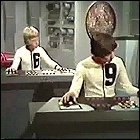 the Ark as “8,000 miles in character” (and then describing the star with which it will eventually collide as being “5,000 miles in character” – or, in other words, smaller than the Ark – presumably it’s a dwarf star); these “movies” went out of circulation as quickly as they appeared, and represented the only time The Starlost was repeated after its original 1973/74 broadcasts. Having vanished into obscurity, The Starlost gained a reputation – usually by word-of-mouth, and frequently repeated by those who had never actually seen it – as the worst science fiction series in the history of TV. Harlan Ellison, in convention appearances, essays and book introductions, did nothing to attempt to salvage the show’s reputation; if Ellison was saying this about his own show, then surely it must have been true. A 21st century DVD release gave The Starlost its first airing since the ’80s, allowing curious viewers to judge its merits – or lack thereof – for themselves.
the Ark as “8,000 miles in character” (and then describing the star with which it will eventually collide as being “5,000 miles in character” – or, in other words, smaller than the Ark – presumably it’s a dwarf star); these “movies” went out of circulation as quickly as they appeared, and represented the only time The Starlost was repeated after its original 1973/74 broadcasts. Having vanished into obscurity, The Starlost gained a reputation – usually by word-of-mouth, and frequently repeated by those who had never actually seen it – as the worst science fiction series in the history of TV. Harlan Ellison, in convention appearances, essays and book introductions, did nothing to attempt to salvage the show’s reputation; if Ellison was saying this about his own show, then surely it must have been true. A 21st century DVD release gave The Starlost its first airing since the ’80s, allowing curious viewers to judge its merits – or lack thereof – for themselves.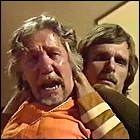 If nothing else, The Starlost represents a brave attempt to make something out of nothing – a perfect illustration of the law of diminishing returns. The series concept remains viable, though it’s doubtful that Ellison will ever overcome his distaste for Hollywood enough to allow it to be revisited. A recent comic adaptation claimed to hew more closely to Ellison’s original intentions for the pilot, but in reality didn’t change much aside from the “production values” thanks to a huge set costing as much as a small one in the realm of printed artwork. The Starlost is still one of the smartest ideas anyone’s had for a genre TV series – if anyone can ever forgive it for the cheap execution foisted upon its first attempt.
If nothing else, The Starlost represents a brave attempt to make something out of nothing – a perfect illustration of the law of diminishing returns. The series concept remains viable, though it’s doubtful that Ellison will ever overcome his distaste for Hollywood enough to allow it to be revisited. A recent comic adaptation claimed to hew more closely to Ellison’s original intentions for the pilot, but in reality didn’t change much aside from the “production values” thanks to a huge set costing as much as a small one in the realm of printed artwork. The Starlost is still one of the smartest ideas anyone’s had for a genre TV series – if anyone can ever forgive it for the cheap execution foisted upon its first attempt.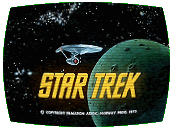

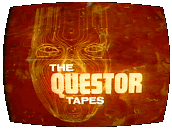
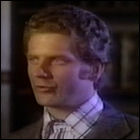 Cast: Robert Foxworth (Questor), Mike Farrell (Jerry Robinson), John Vernon (Dr. Darrow), Lew Ayres (Dr. Voslovik), James Shigeta (Dr. Chen), Robert Douglas (Dr. Michaels), Dana Wynter (Lady Helena Trimble), Majel Barrett (Dr. Bradley), Ellen Weston (Allison Sample), Reuben Singer (Dr. Gorlov), Fred Sadoff (Dr. Audret), Gerald Saunderson Peters (Randolph), Walter Koenig (Administration Assistant), Eyde Girard (Stewardess), Alan Caillou (Immigration Official), Lal Baum (Colonel Hendricks), Patti Cubbison (Secretary)
Cast: Robert Foxworth (Questor), Mike Farrell (Jerry Robinson), John Vernon (Dr. Darrow), Lew Ayres (Dr. Voslovik), James Shigeta (Dr. Chen), Robert Douglas (Dr. Michaels), Dana Wynter (Lady Helena Trimble), Majel Barrett (Dr. Bradley), Ellen Weston (Allison Sample), Reuben Singer (Dr. Gorlov), Fred Sadoff (Dr. Audret), Gerald Saunderson Peters (Randolph), Walter Koenig (Administration Assistant), Eyde Girard (Stewardess), Alan Caillou (Immigration Official), Lal Baum (Colonel Hendricks), Patti Cubbison (Secretary)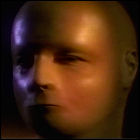 Notes: Co-writer Gene L. Coon was one of the driving creative forces behind the original Star Trek, responsible for such episodes as Arena, Space Seed, The Devil In The Dark, Errand Of Mercy, and Metamorphosis; under the pseudonym Lee Cronin, he also contributed later scripts such as Spock’s Brain. He is often credited as the creator of the Klingons and the contributor of such concepts as the Prime Directive. He died of cancer in 1973, several months before the premiere of The Questor Tapes. Walter Koenig gets a blink-and-you’ll-miss-it walk-on as the assistant who gives Jerry Robinson’s credentials to Darrow – it’s easy to miss him behind the giant ’70s sideburns and moustache.
Notes: Co-writer Gene L. Coon was one of the driving creative forces behind the original Star Trek, responsible for such episodes as Arena, Space Seed, The Devil In The Dark, Errand Of Mercy, and Metamorphosis; under the pseudonym Lee Cronin, he also contributed later scripts such as Spock’s Brain. He is often credited as the creator of the Klingons and the contributor of such concepts as the Prime Directive. He died of cancer in 1973, several months before the premiere of The Questor Tapes. Walter Koenig gets a blink-and-you’ll-miss-it walk-on as the assistant who gives Jerry Robinson’s credentials to Darrow – it’s easy to miss him behind the giant ’70s sideburns and moustache.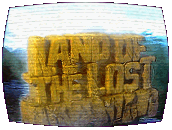
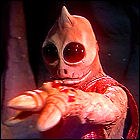 (Enik), David Greenwood (Sleestak), William Laimbeer (Sleestak), John Lambert (Sleestak)
(Enik), David Greenwood (Sleestak), William Laimbeer (Sleestak), John Lambert (Sleestak)
